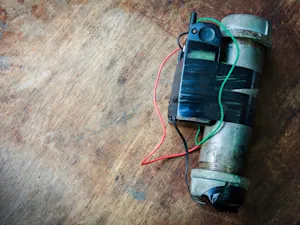
Night Stalker's Chilling Smile Haunted LA to the End
Richard Ramirez (aka The Night Stalker) with attorney Joseph Gallegos in Los Angeles during appearance in Municipal Court on Oct. 10, 1985. Photo by Iris Schneider, Los Angeles Times under CC BY 4.0.
From midnight break-ins to whispered satanic rituals, the chilling crimes of Richard Ramirez — better known as the Night Stalker — still haunt Los Angeles. But what really happened during his brutal spree, and what led to his death decades later?
A Season of Terror
Between April 1984 and August 1985, fear gripped Southern California. Richard Ramirez, a drifter from El Paso, Texas, broke into homes across the Los Angeles area and brutally attacked residents. His crimes included at least 13 confirmed murders, as well as rapes, beatings, and burglaries, often committed with different weapons including guns, knives, a tire iron, and even a machete.
There was no clear victim profile. Ramirez's targets ranged widely in age and background, and he showed no predictable pattern in his approach. Some survivors reported being forced to swear allegiance to Satan during the attacks.
The randomness of his methods and the sheer brutality of his assaults created widespread panic. Police were overwhelmed and the public began installing window bars, locking doors at all hours, and arming themselves.
Capture and Conviction
The turning point came in August 1985 when police matched a fingerprint left in a stolen vehicle to Richard Ramirez. Authorities released his mugshot and issued a public warning, saying, "Every law officer and every citizen now knows exactly what you look like and who you are," according to PEOPLE.
On Aug. 31, 1985, Ramirez was spotted in East Los Angeles attempting to carjack a woman. Alert neighbors recognized him from the news and gave chase. A group eventually tackled him and beat him with a metal bar until police arrived.
In 1989, after years of delays and psychological evaluations, Ramirez was convicted on 43 counts, including 13 murders, 5 attempted murders, 11 sexual assaults, and 14 burglaries. The judge handed him 13 death sentences.
A Life — and Death — on Death Row
Despite his sentence, Ramirez was never executed. He spent 24 years on death row at San Quentin State Prison. On June 7, 2013, he died at Marin General Hospital in Greenbrae, California, at the age of 53.
Initial reports cited natural causes, but a coroner's report later confirmed he died from complications of B-cell lymphoma, a common form of non-Hodgkin lymphoma.
At the time of his death, Ramirez also suffered from hepatitis C and complications from long-term drug use prior to his incarceration. A friend confirmed he had been heavily abusing cocaine and injecting it in the year before his arrest.
The Man Behind the Moniker
Ramirez was born Feb. 29, 1960, in El Paso, Texas, and grew up in a troubled household. His cousin, a Vietnam War veteran, allegedly showed him photos of women he had raped and killed and later shot his own wife in front of the young Ramirez.
At 15, Ramirez moved to Los Angeles, where he learned burglary techniques and funded his drug addiction through petty crimes.
He was arrested at least once for auto theft before escalating to violent crime.
Ramirez later claimed to be a Satanist, telling interviewers he was "in alliance with the evil that is inherent in human nature" and described Satan as a stabilizing force in his life, according to PEOPLE.
Reactions to His Death
Public reactions to his death were mixed. Some survivors and family members of victims felt justice had been delayed too long. Bill Carns, one of Ramirez's last surviving victims, told the Los Angeles Times, "He should have been put to death an awful long time ago," as reported by PEOPLE.
According to the Los Angeles Times, Reyna Pinon, whose husband helped capture Ramirez, added, "To me, he had a better death than all those people whose lives he took," as reported by PEOPLE.
Law enforcement officials saw his death as the end of a dark era. While Ramirez avoided execution, Los Angeles Deputy District Attorney Alan Yochelson told the Los Angeles Times, "Some measure of justice has been achieved," according to PEOPLE.
Meanwhile, Ramirez's family in El Paso released a public statement, reported by PEOPLE, asking for privacy and saying, "The world judged him, whether fairly or unfairly, it no longer matters. He is now before the true judge."
A Lasting Shadow
The terror Richard Ramirez unleashed hasn't disappeared. His story continues to haunt popular culture and public memory. "The Night Stalker" was the subject of a 2021 Netflix docuseries, a 2016 movie, and more recently, the 2024 film "MaXXXine."
Tiller Russell, director of "Night Stalker: The Hunt for a Serial Killer," reflected on Ramirez's long-term impact, noting that many Angelenos still keep bars on their windows — a safety precaution born of fear from those years.
References: How Did Richard Ramirez Die? Here's Why the Night Stalker's Demise Didn't Happen on Death Row 12 Years Ago | How Was Night Stalker Richard Ramirez Caught? All About the Angry Mob That Captured the Serial Killer in 1985 | Richard Ramirez: American Serial Killer























